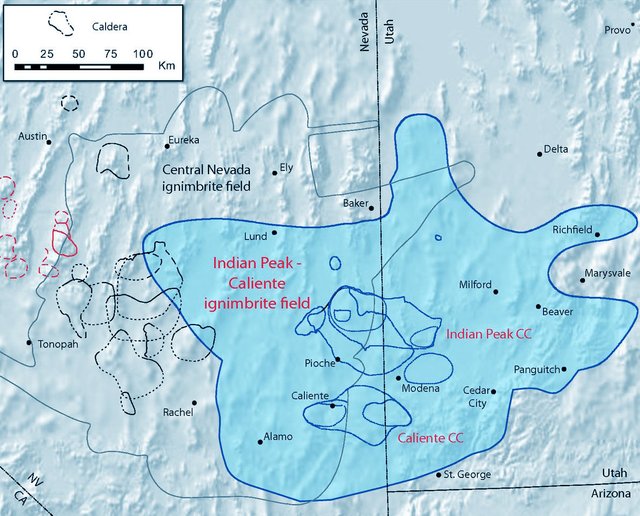“supervolcanoes” discovered near the Utah-Nevada was 5,000 times larger than the 1980 Mount St. Helens eruption
For a long time, BYU geologists have scanned for the spring of gushing lava that created a great many cubic kilometers of pyroclastic stream on the Utah-Nevada outskirt. Sorting out the geologic confirmation from five diverse mountain runs crosswise over several miles, they report the revelation of an enormous 30-million-year-old supervolcano in Utah. The antiquated caldera, which would have been a few miles profound, is never again unmistakable as it has disintegrated and loaded with pyroclastic stream numerous years back. The first Wah Springs pyroclastic store related with this caldera secured a territory of ~12,000 square miles and had a volume of 5,900 cubic kilometers or ~1,400 cubic miles (5,000 times the extent of the Mount St. Helens ejection that transmitted only one cubic kilometer of material). The analysts report this is one of the biggest recorded supervolcanoes around the world.

Brigham Young University geologists discovered proof of a portion of the biggest volcanic emissions in earth's history right in their own particular patio. These supervolcanoes aren't dynamic today, yet 30 million years prior in excess of 5,500 cubic kilometers of magma emitted amid a one-week time frame close to a place called Wah Springs. By correlation, this emission was around 5,000 times bigger than the 1980 Mount St. Helens ejection.
"In southern Utah, stores from this single emission are 13,000 feet thick," said Eric Christiansen, the lead creator for the BYU examine. "Envision the decimation — it would have been disastrous to anything living inside several miles."
Dinosaurs were at that point terminated amid this day and age, however what numerous individuals don't know is that 25-30 million years prior, North America was home to rhinos, camels, tortoises and even palm trees. Confirmation of the old greenery was saved by volcanic stores.
The examination gathering, headed by Christiansen and teacher emeritus Myron Best, estimated the thickness of the pyroclastic stream stores. They utilized radiometric dating, X-beam fluorescence spectrometry, and concoction investigation of the minerals to check that the volcanic fiery debris was all from a similar old super-emission.
They found that the Wah Springs emission covered a tremendous district stretching out from focal Utah to focal Nevada and from Fillmore on the north to Cedar City on the south. They even discovered hints of cinder as far away as Nebraska. Be that as it may, this wasn't a disconnected occasion; the BYU geologists discovered confirmation of fifteen super-emissions and twenty extensive calderas.
Regardless of their gigantic size, the supervolcanoes have been covered up on display for many years. The desolates of disintegration and later misshapening have to a great extent deleted them from the scene.
Supervolcanoes
Supervolcanoes are not the same as the more recognizable stratovolcanoes – like Mount St. Helens – in light of the fact that they aren't as evident to the stripped eye and they influence colossal territories. Supervolcanoes as we've seen are some of earth's biggest volcanic structures, but they don't remain as high cones. At the core of a supervolcano rather, is an expansive fall. Those crumples in supervolcanoes happen with the ejection and frame colossal gaps in the ground in levels, known as calderas.
Relatively few individuals realize that there are as yet dynamic supervolcanoes today. Yellowstone National Park in Wyoming is home to one generally an indistinguishable size from the Wah Springs caldera, which was around 25 miles crosswise over and 3 miles profound when it initially framed.